Via Romea Germanica III
Mezzaselva, Italy to Bressanone
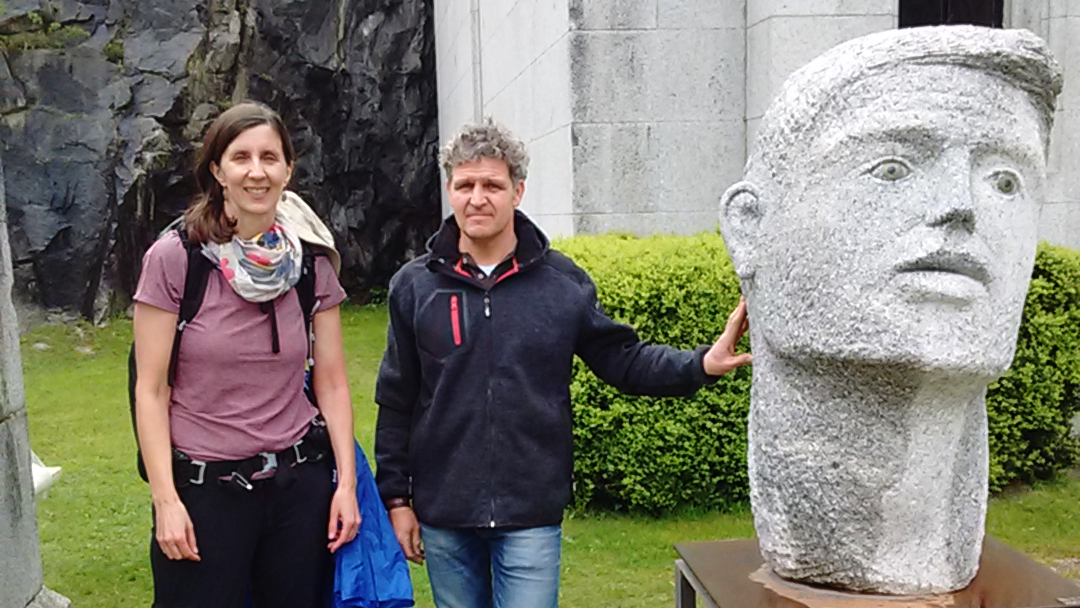
Mary, sculptor Markus Gasser, and the head of Marcus Brutus.
Clink, clink, clink.
Marble chips flew from the side of a veined white block as Mary whacked away with a beefy hammer and a chisel. She had taken one look at the giant head of Brutus — Julius Caesar’s assassin — and ambition had flared in her eyes.
Captured by her artistic vision, I wondered if I would ever get her back on the road to Bressanone.
Welcome to the Peripatetic Historian's multi-part series about hiking the Via Romea Germanica.
If you have stumbled across this installment by accident or a fortuitous Google search, and have no idea what is happening, you might prefer to begin at the start of the series, here: Introduction to the Via Romea Germanica
Otherwise, let's return to our story, already in progress.
Day Three brought unpromising conditions. It had rained heavily at intervals through the night, and the morning window was coated with fresh precipitation.
Downstairs for breakfast. We had overnighted in a highly regimented inn. That Teutonic efficiency persisted: each hotel guest had an assigned place in the dining room. A pleasant hostess led us to our table, where a monstrous bowl of bread sat waiting.
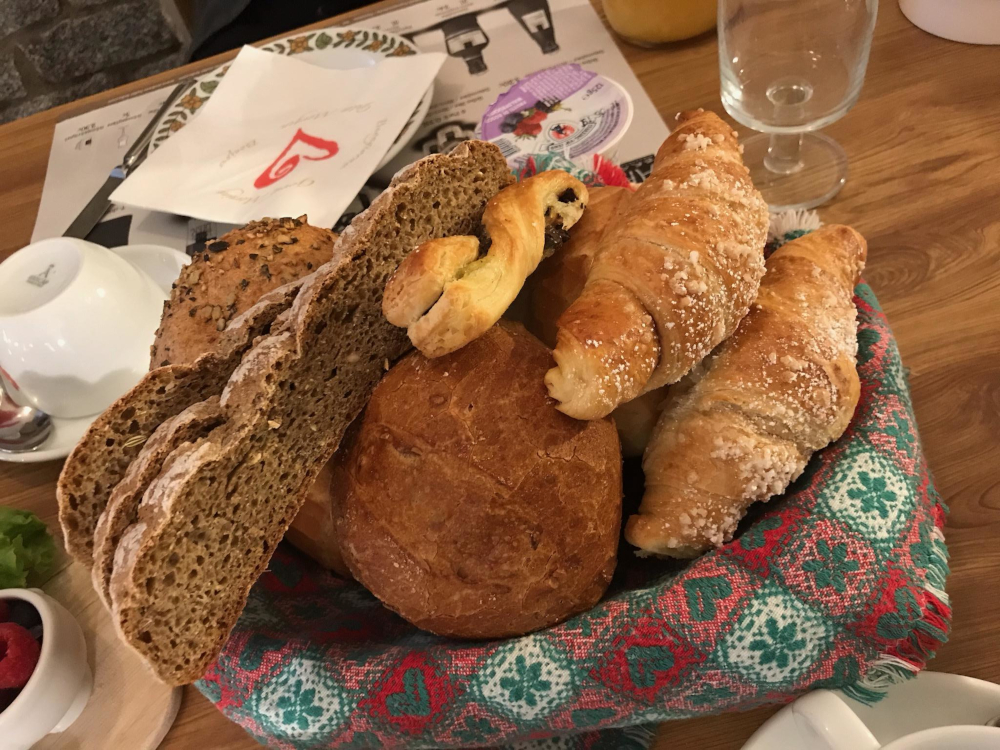
Rustic bread.
A moment later she returned, offering a selection of potted yogurts. This was followed by the presentation of the meat and cheese platter, an overwhelming pile of speck and other flesh-based delicacies, all for us. When I say us, I mean me, for my delightful companion, Mary, does not eat speck in the morning (or most other times either). I plunged into the speck and managed to work my way, slice by slice, to the bottom.
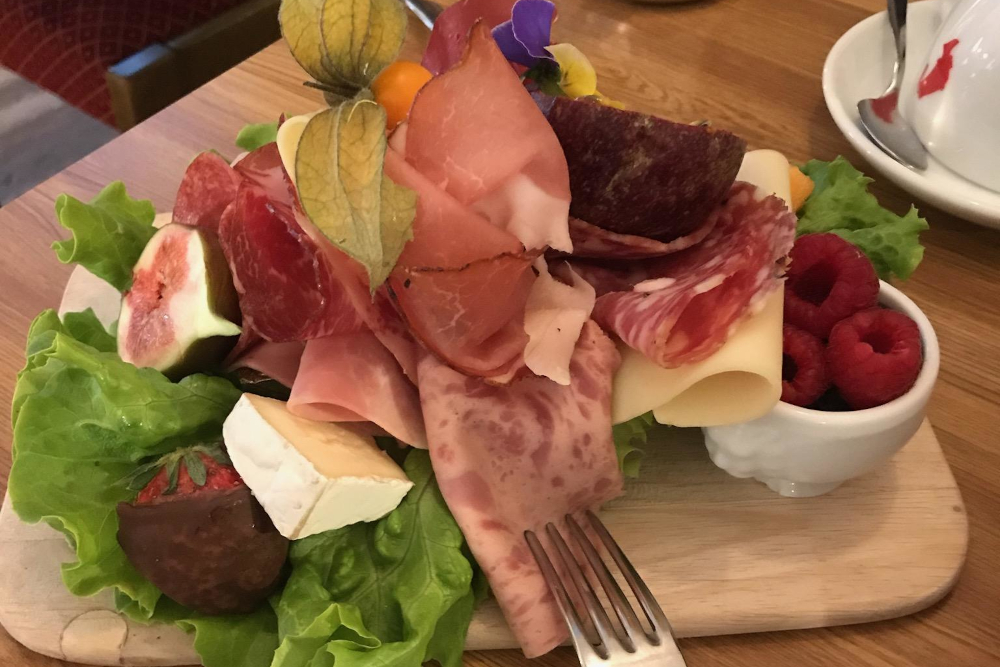
A side of Speck.
Speck. The official breakfast of Via hikers.
I don't usually endorse commercial establishments in this series, but I would like to pause to note that the Hotel Sachsenklemme, near Mezzaselva, is a very fine establishment. Difficult to pronounce (and type), but highly recommended.
We get off on the wrong course this morning. We thought that we were much further along than we were. In fact we had not reached Mezzaselva yet, and ended up walking beside the SS12, rather than on the much nicer bike path.
Eventually, however, we did reach Mezzaselva, found the bridge we should have crossed over the Isarco, and rejoined the route.
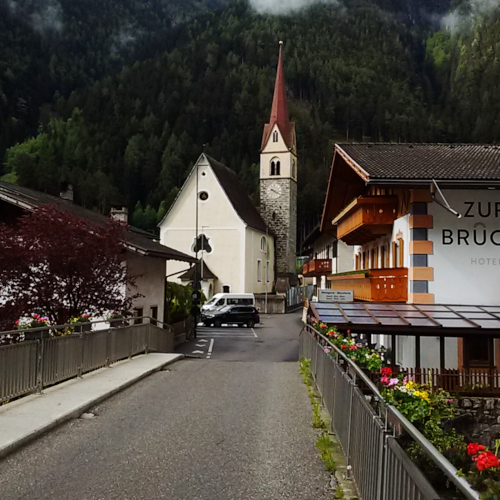
The bridge to Mezzaselva
We followed a pleasant path through the woods, above the highway. The smooth pavement was periodically interrupted by oversized piles of sand and grit, which had been washed down the mountainside during ferocious torrents. The storm runoff must be particularly vigorous here, although the watercourses were dry.
We, however, were not. The promised rain soaked down as we strolled through the forest. Drops struck the pine trees and then continued down to plop on my hat. It was time to implement my new hiking strategy. When walking the Camino de Santiago two years ago, the rare rainstorm would lead me to deploy a large orange poncho that covered both body and backpack. It was an incredible nuisance: the material billowed in the wind, and its lack of breathability left me as soaked underneath as I might have been from the weather.
I have formulated a new plan: when facing inclement weather, I will protect my backpack with a raincover, and let my body get wet. I am wearing water resistant trousers and a quick drying tech shirt. Embrace the rain, and, as a last resort, should I need it, I can don the snug rain jacket tucked in my backpack.
The strategy worked well; the rain fell steadily, but the exertion of hiking kept me warm. I did not need the rain jacket.
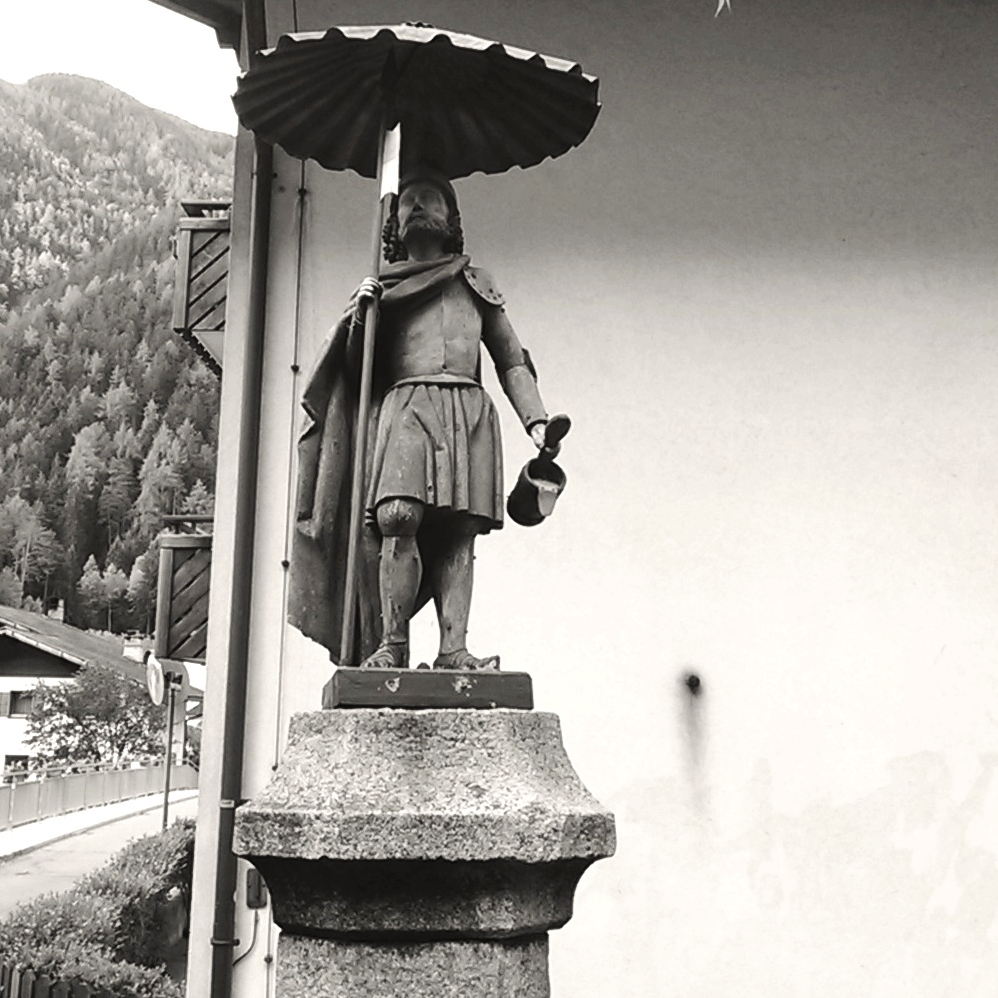
Ready for the rain.
Eventually we crossed to the western side of the valley, and passed the town of Fortezza. Nearby was a massive construction zone. This was the southern end of the Brenner Base Tunnel, a 55 KM railroad tunnel that workers are drilling beneath Brenner Pass. Ultimately it will link Fortezza to Innsbruck. This mad shifting of earth will increase the speeds of the trains that cross the mountains here. It currently requires almost two hours to pass from Bolzano to Innsbruck. Once the tunnel is opened, the time will be reduced to 50 minutes. The hope is that a faster train connection will encourage motorists to abandon their cars, thus reducing congestion and pollution at the pass. Work on the tunnel began in 2008, and the project is scheduled for completion in 2028.
But enough train talk. South of Fortezza is the old military installation that gives the town its name. Franzensfeste, or the more prosaic Forte di Fortezza, is a nineteenth century military installation conceived by the Austrian king, Francis I. The fort was built to slow - rather than speed - valley travelers. Workmen carved a labyrinth of underground caves into the solid granite, and built bunkers and buildings out of the excavated rock. The fort stands a short distance off the Via, but we decided to have a look.
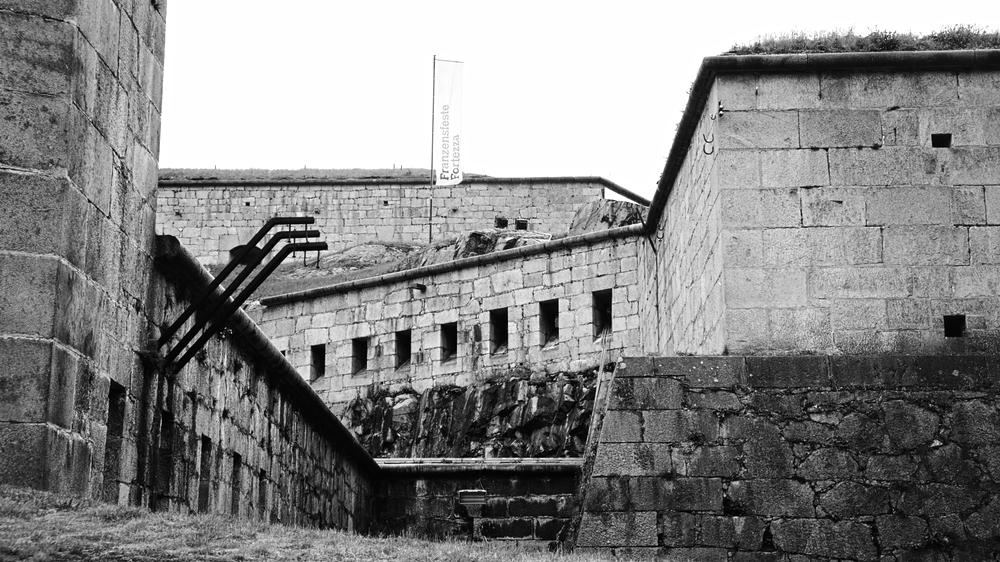
The sturdy walls of Forte di Fortezza.
And a good decision that was: admission to the fort was free today. We wandered around the grey granite buildings, until we stumbled across a sculptor named Markus Gasser, who had set up an exhibition on the fort's lawn. Markus was giving the visitors an opportunity to wield chisel and hammer on some real stone. Mary, always game to whack away at things, began to carve grooves through the marble.
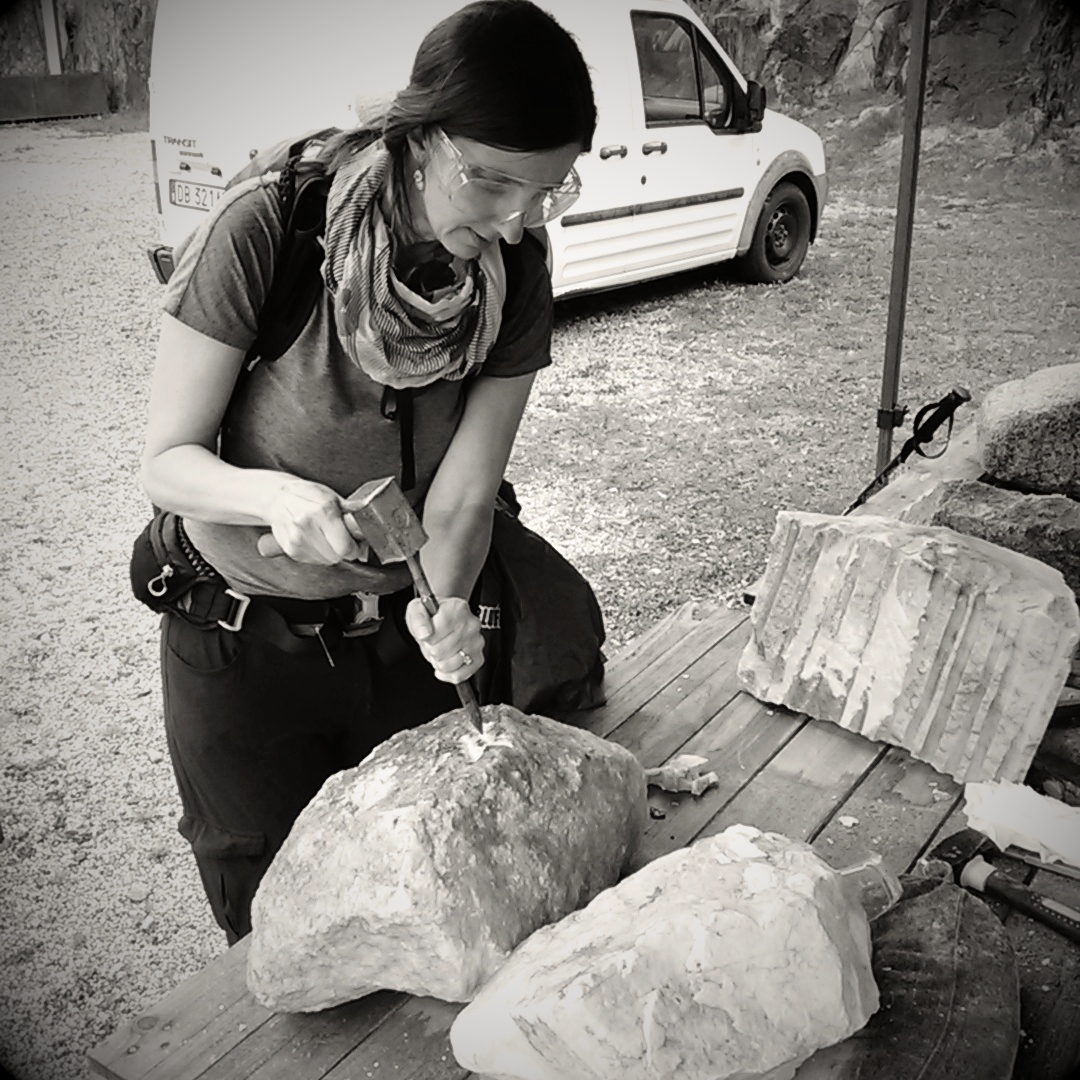
Mary begins her art project.
Although marble seems quite hard (compared, for example to Speck), it is a relatively soft rock. Markus explained that it is only a three on the rock hardness scale. Granite, by contrast, is a seven, and diamond, the hardest rock of all, is a ten.
Chips were flying, and it was difficult to pry the hammer out of Mary's hand. I think she may take up the craft when we return home.
According to Markus all of the blocks we saw in the buildings of the fort around us had been cut by hand. Thousands of men had worked on the project, even though the fort was never actually used in combat.
Markus specializes in realistic renderings of subjects. He had brought one of his creations, a massive granite head of Julius Caesar's assassin, Brutus. I might have purchased it, but I already have too much weight in my backpack.
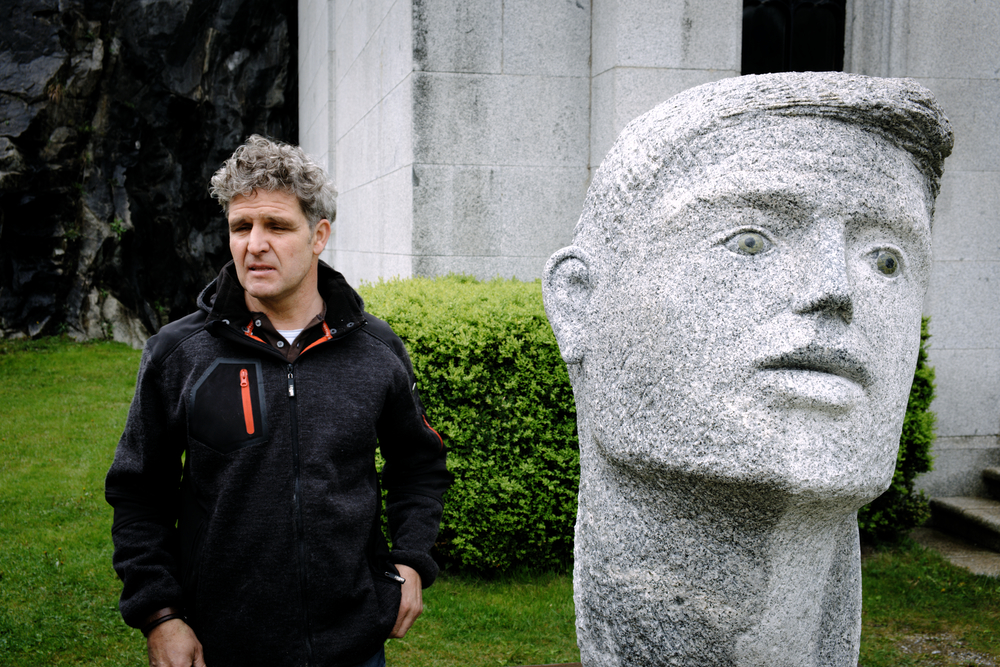
The artist and Brutus
After finishing our tour of the fort, we returned to the Via and walked down a long hill that flanks the autostrada. The rain had stopped and there were a few blue gaps in the uniform grey overhead. My hat and tech shirt began to dry.
We crossed SS12 and left the high speed automobile traffic behind. Our route carried us down past the first vineyards of the trip, on a steep descent alongside massive rock walls.
At the bottom of the hill was an agricultural oddity: a massive strawberry farm in which no plant touched the earth. A farmer had covered acres of land with long rows of white plastic tents. Beneath the tents hung thick black plastic sausages, suspended about four feet off the ground. The black plastic was punctured every few inches, and each hole hosted a strawberry plant. It was a very high tech way to grow strawberries, and I imagine it makes them easier to pick (no stooping over).
High-tech. That's what it's all about these days.
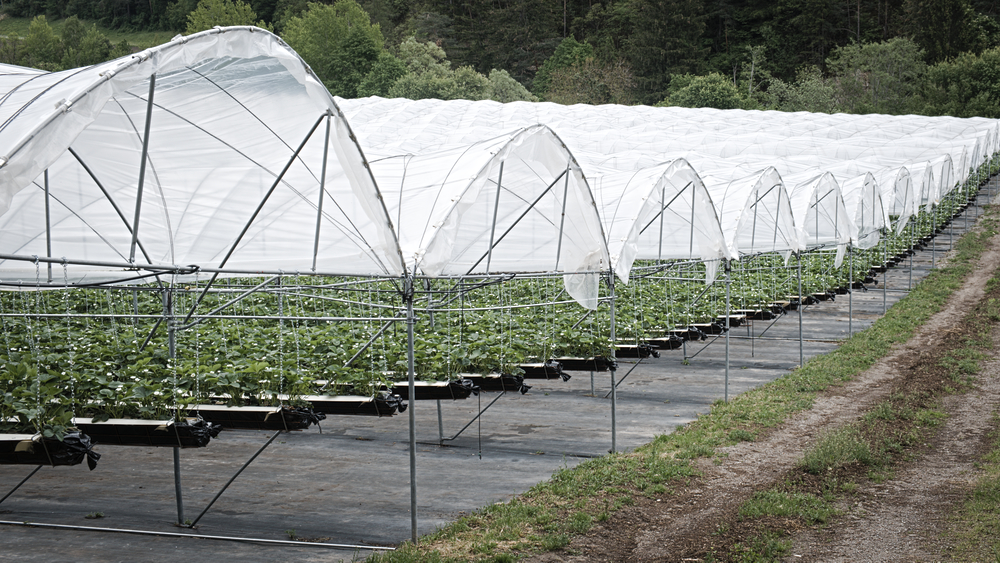
High-tech strawberry farm.
We recrossed the Isarco River, and trailed beside its bank to the next major attraction on the day's agenda, the Monastery of Novacella. Novacella is the most important monastery in the Sud Tirol. Founded in 1142 by the bishop of Bressanone, it is an Augustinian order (the monks follow the rule of Saint Augustine, rather than the more widely used rule of Saint Benedict). For almost 900 years, the monks have lived outside of Bressanone, and the monastery library is said to be unparalleled in its collection of medieval manuscripts.
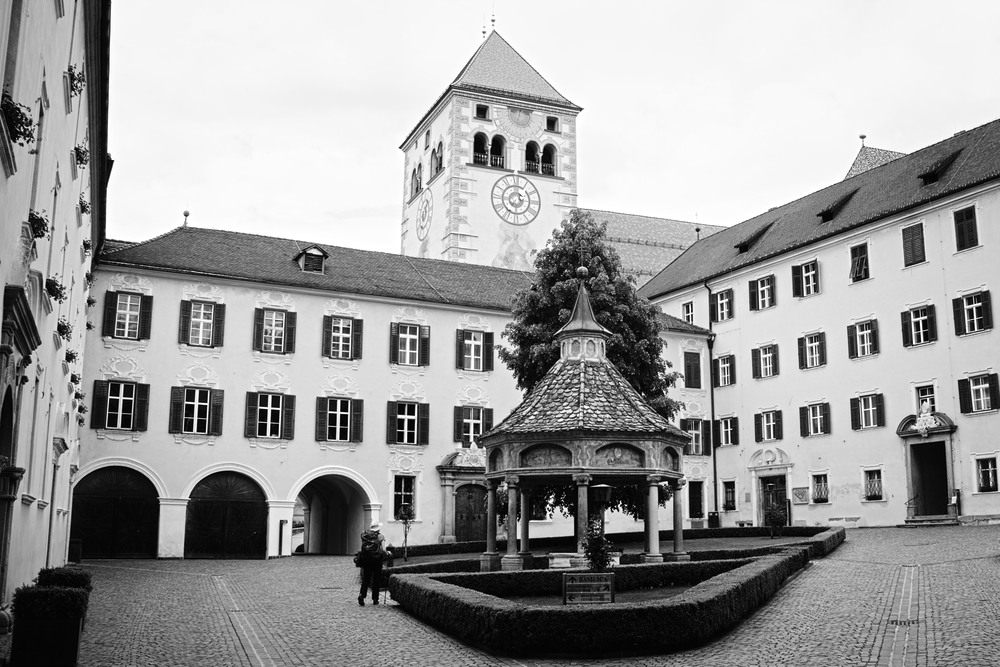
Novacella Monastery.
Unfortunately, most of the monastery is inaccessible to visitors, except on an official tour. We would have willingly taken a tour (if only to get a look at the library), but they aren't offered on Sundays. Some bad luck there. Nevertheless, the church was open and we were able to spend a few minutes inside this extravagant baroque wonderland. Every available surface is covered with pink marble or white sculpture. It was impressive, even if it isn't my favorite style of church architecture.
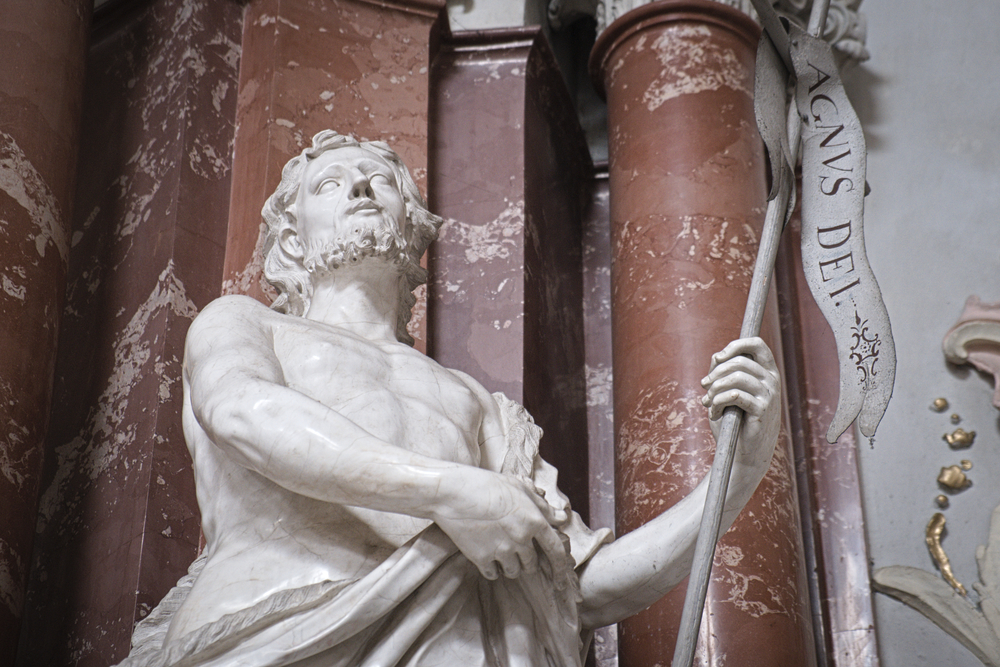
Baroque art, Novacella.
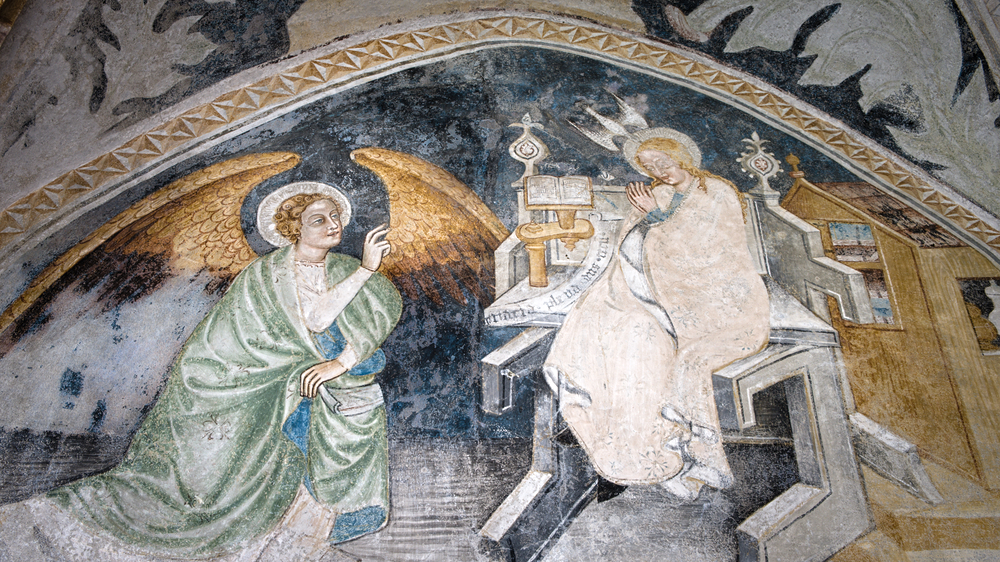
The Annunciation, Novacella.
We left Novacella and continued toward Bressanone. The path ran beside the river, and even through industrial buildings crowded the opposite shore, it was a long walk before we reached the center of town. Our accommodation is not exactly in the center, and we ended up hiking away from the Piazza Duomo to an agriturismo on the far end of town.
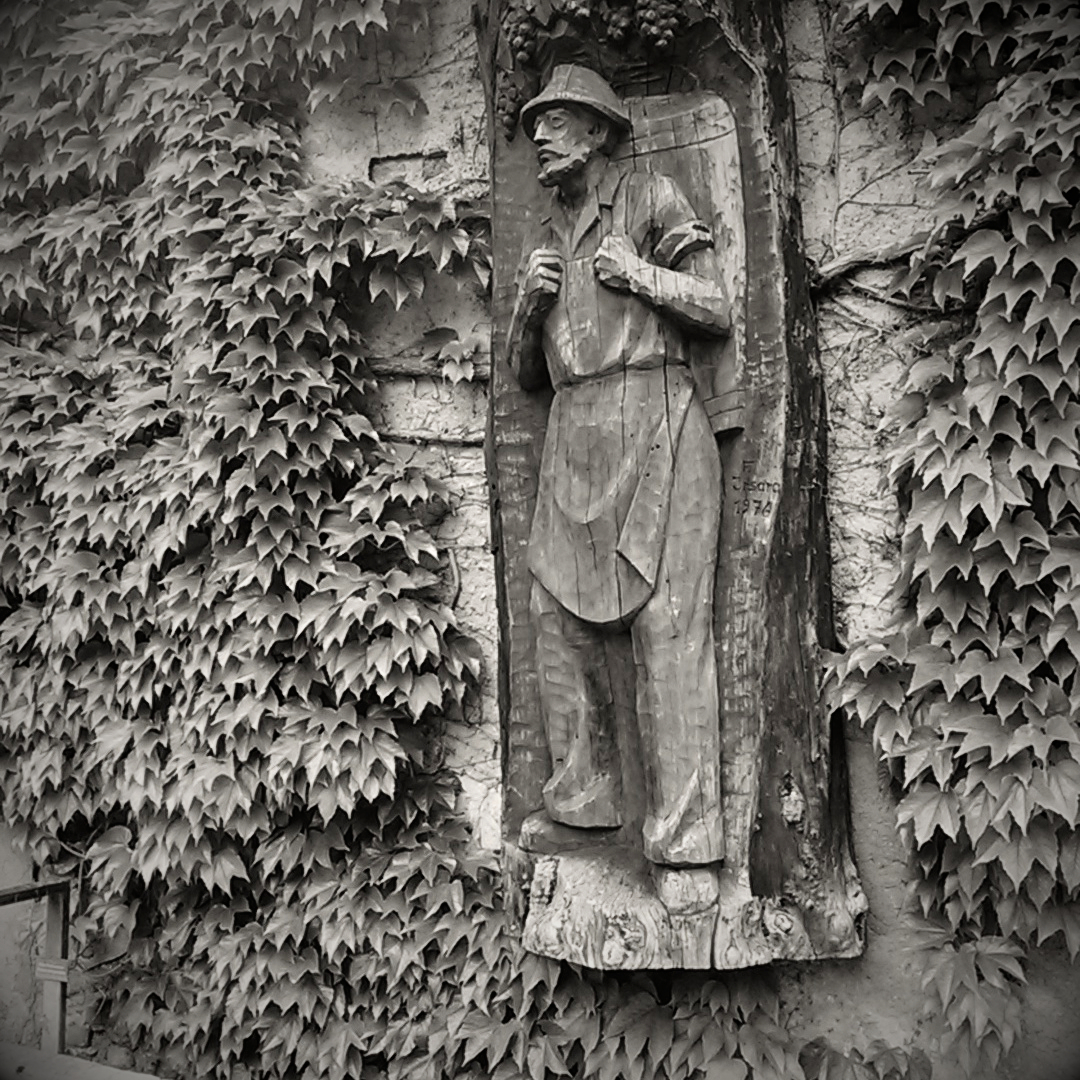
Author selfie
We arrived just ahead of the rain. It appears we are in for another wet night.
Today's Distance: 21.86 KM. Total Distance: 58.12 KM.
If you are enjoying this series, why not subscribe to Richard's monthly newsletter, What's New in Old News? The Peripatetic Historian is on the road, roaming the world and compiling fresh adventures. Don't miss out. Click here to join the legions of above-average readers who have already subscribed.